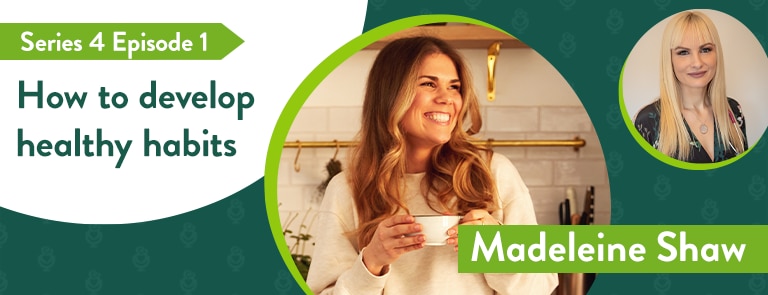20% off €40
Meditation guide: An introduction to meditation for beginners

There’s a common misconception that meditation is about turning off your thoughts.
But it’s actually more about training yourself to observe these thoughts in a more mindful and engaged way. In this meditation guide, we introduce the concept and benefits of adopting this mindfulness practice.
What is meditation?
Meditation is certainly not a new fad. The origins of this ancient wellness practice go back to roughly around 1500 years BCE (Before Common Era.)1
Over time, a number of religions have adopted meditation as a form of prayer and spiritual contemplation. However today, it doesn’t always have a religious angle and it’s widely practised without any overarching divine purpose.
In its simplest form, meditation is about dedicating a certain amount of your time, attention and energy to only one thing. This isn’t about zoning out or clearing your mind of all thoughts.
And it’s not about mind control. It’s about training your mind to encourage a heightened sense of awareness.
What is the use of meditation?
When people are beginning meditation, it can be for a variety of personal reasons. Unfortunately, we can’t cover all of these in this meditation guide, but here are five common motivations.
- Manage and reduce stress and anxiety
- Improve attention or focus
- Increase compassion or better understand pain
- Build peace of mind
- Reduce brain chatter to achieve clarity
6 benefits of meditation
Creating time for meditation can lead to a whole range of benefits for your mental, physical and emotional well-being.
1
Better sleep
If you’re one of the three-quarters of people in the UK getting less than seven hours kip per night,2 deep relaxation techniques could help you get to sleep faster.
But there are a number of other ways that meditation can enrich the quality of your sleep too. For example, by enhancing rapid eye movement sleep (REM) and melatonin levels.3
2
Ability to better manage your stress levels
Meditation is a great way to clear jumbled thoughts, eliminate information overload, and restore a sense of calm and balance.
By dedicating time to analyse what you’re thinking and feeling, you can zoom out on the source of stress and explore how you’re processing it.
This can help you to open your mind, to reframe the problem and dramatically alter your view of what’s causing you to feel overwhelmed.
Studies suggest meditators could develop a greater capacity to manage stress and cope with the pressures of life.4
In fact, a 2016 Harvard study found meditation could have a longer lasting effect on reducing stress than taking a holiday.5,6
3
Dialling down feelings of everyday anxiety
Our anxiety levels rise when we focus on negative thoughts and the terrible things that could happen. One way you can learn to manage these feelings better is to take time to dissect and understand your anxiety.
This can help you to get a more accurate sense of what triggers these emotions and how this can affect you. And to get more scientific, it’s thought that with consistent meditation, you can redirect neural pathways in your brain.
This could help to regulate anxiety-inducing thoughts and change your relationship with any negative feelings they unearth.7
Note: This meditation guide refers to everyday anxiety, such as the butterflies in your tummy and sweaty palms before you do something new.
This is often a short period of intensified emotion that goes once a situation passes. In contrast, a clinical anxiety disorder is a diagnosed condition that can persist for much longer.
It’s important to emphasise that although a mindfulness practice can help to manage feelings of everyday anxiousness, it’s no replacement for therapy when you have a diagnosed condition.
4
Improving focus and concentration
Focus is about being able to direct your attention to one thing at the expense of all others. This can be harder than it sounds.
In life, you’ll probably often find yourself trying to concentrate on several tasks simultaneously. And although society tends to applaud multi-tasking, it can be a drain on your productivity and amplify stress and overwhelm.
With meditation, you can train your mind to give your attention exclusively to one thing at a time. As a result, a regular meditator is less likely to give in to distractions than someone who doesn’t meditate.8
5
Strengthening self-awareness
Self-esteem describes the thoughts that shape how we value ourselves. Low self-esteem refers to when a person’s thoughts about themselves are negative.
As meditation encourages deeper self-reflection (without judgement) it can start to change the relationship we have with our thoughts. This can have a positive impact on self-esteem.
For example, in a 2009 study, 14 people with social anxiety disorder participated in two months of meditation training. They reported lowered anxiety and improved self-esteem at the end of the program.9
6
Increasing compassion and kindness
Sitting alone with only your own thoughts may seem as far from helping others as you can imagine.10
But with meditation, you’re helping your mind to be more understanding and less judgmental.
Connecting with your thoughts in this way can help you tap into compassion and let go of hostility, which in turn can have a positive impact on your relationships with others.
The jury is out on what is the best type of meditation – it’s down to your personal preference. In this meditation guide, we focus on three meditation types to give you a taste of how techniques can differ.
But before you choose your method, consider two important decisions:
-
Guided or unguided?
This is probably the first decision you’ll make before beginning meditation for the first time.
Guided meditation is particularly suitable for newcomers because someone directs you through the steps of a meditative technique and helps you to get the most out of your experience.
With an unguided meditation there’s no-one explaining the process to you – you’re on your own.
-
Insight or calming?
The route you take with your meditative practice will depend on your motivation. A simple way to break this down is to consider this – is your priority insight or calming?
Insight meditation is often motivated by an intention to make some kind of change, such as developing compassion.
With calming meditation, on the other hand, there’s a bias towards improving concentration and nurturing a more peaceful state of being. But don’t worry if both sound appealing – many types of meditation incorporate both elements.
What are the 3 types of meditation?
Your focus during meditation is an image of someone else. The purpose of this technique is to direct you firstly to channel positive energy and kindness to yourself, and then to extend this to others.
In this meditation you concentrate on your breath as a way to anchor your mind and maintain awareness. If your mind starts to meander, you simply return to your breath to regain your focus.
This technique is designed to make sure your body and mind are in harmony by performing a mental scan. Imagine a photocopier light slowly moving from the top of your head to the end of your toes. As you do this consider any change in sensation, discomfort, tension, or pain that you feel.
How meditation works
You just sit in silence and do nothing other than breathe and listen to your thoughts. Sounds easy doesn’t it?
But the reality for most people is meditation can be difficult to get into at first. We’ve included in this meditation guide a simple five-minute technique that offers an easy introduction.
A five-minute meditation for beginners
Read on to find out about our favourite five-minute meditation for beginners.11
1
Set a timer for five minutes. Close your eyes and relax.
2
Take a few deep breaths from your diaphragm, focusing on a five-count breath:
- Inhale slowly from your belly
- Extend the breath into your ribs
- Then into your chest
- Take it up into the crown of your head
- Hold the breath
3
For the exhale, follow this five-count breath in reverse. Exhaling from the crown, to the chest, to the ribs, down to the belly and ending with a pause. Then start again.
4
During the breathing sequence visualise the tension leaving your body.
5
Keep going for five minutes.
Can meditation be dangerous?
Some studies revealed a small percentage of individuals might experience some negative effects from meditation.12
This can be anything from an increase in anxiety and stress, to more extraordinary experiences like hallucinations. This reaction is most often connected to those practicing very intensive meditation for many hours, such as on a retreat.13
Meditation tips for beginners
Meditation is a skill that has to be learnt. As we reach the end of our meditation guide, we provide a few tips that might help those starting out on a meditative journey:
Commit to a regular practice
It takes discipline and a bit of persistence to develop a habit that sticks. Whether you meditate daily or a few times a week, morning or evening, at home or elsewhere, you need to make it fit into your routine.
Dress so you’re comfortable
Wear whatever you like. But kick off any uncomfortable shoes and loosen any constricting top buttons or waistbands. It helps to wear comfy clothes. Or nothing at all if that makes you feel more at ease.
Make sure you’re sitting comfortably
Despite stereotypes, you don’t need to sit cross-legged and burning incense. In fact, beginners often find it’s easier to sit upright on a chair, neck relaxed, chin slightly tucked in and hands resting loosely on your lap or knees.
Choose frequency over duration
To begin with, anything longer than 10 minutes may feel intimidating. Start with five or three minutes if that feels more doable. You can build up the duration as your confidence grows.
Focus on why you’re doing it
Being clear about what you want to get out of meditation helps you to build up the commitment to your practice.
And to end our meditation guide, when should you meditate?
Are you looking for a meditation guide that tells you exactly when is the best time to meditate? Unfortunately, we can’t be that specific.
The most important thing is to create a gap in your schedule. One way to do this is to reserve the same time and the same place every day for your meditation.
Another way is to connect your meditation to an activity you do every day. For example, meditation could always come after you walk your dog. Or before you have breakfast. The most important thing is you’re making meditation part of a regular routine.
How to develop healthy habits with Madeleine Shaw
How to develop healthy habits with Madeleine Shaw
In this episode, we explore Madeleine's morning and evening routines, her favourite healthy snack ideas for on the go, how to meditate and why it provides so many people with comfort, plus tips on instilling healthy habits in the generation to come.


Last updated: 9 June 2022
- https://mindworks.org/blog/history-origins-of-meditation/
- https://sleepcouncil.org.uk/wp-content/uploads/The-Great-British-Bedtime-Report-2017-1.pdf
- https://www.ncbi.nlm.nih.gov/pmc/articles/PMC3328970
- https://psycnet.apa.org/record/1976-20168-001
- https://www.nhs.uk/news/lifestyle-and-exercise/does-meditation-reduce-stress/
- https://www.health.harvard.edu/blog/relaxation-benefits-meditation-stronger-relaxation-benefits-taking-vacation-2016102710532
- https://www.ncbi.nlm.nih.gov/pmc/articles/PMC1361002/
- https://mindworks.org/blog/how-meditate-better-concentration/
- https://www.ncbi.nlm.nih.gov/pmc/articles/PMC4283801/
- https://repository.upenn.edu/cgi/viewcontent.cgi?article=1149&context=wharton_research_scholars
- https://www.verywellmind.com/practice-5-minute-meditation-3144714
- https://www.sciencefocus.com/news/can-mindfulness-and-meditation-be-harmful/
- https://www.nhs.uk/news/lifestyle-and-exercise/does-meditation-carry-a-risk-of-harmful-side-effects/



